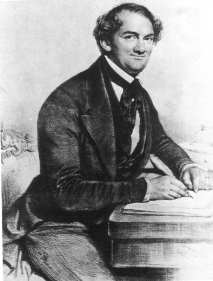
Phineas Taylor Barnum (1810-1891) described himself as the "Prince of Humbug," an epithet he more than earned during his long career as a showman. Barnum is best remembered today for the circus that still bears his name (and for the animal crackers named after him), but before the circus he was the proprietor of a New York museum, and it was this museum that initially made him rich and famous.
Barnum's career as a showman was marked by a variety of sensational publicity stunts, hoaxes, and plain-old false advertising which he used to attract visitors to his bizarre exhibits. His promotional techniques often tested the boundaries of what the emerging nineteenth-century middle class was willing to accept, but he was somehow able to convince audiences that he was selling them entertainment, not fraud. An indication that people viewed him as a kind of lovable con-artist is the fact that the phrase, "There's a sucker born every minute," will forever be attributed to him, even though he was not the one who said it.
His money-making schemes included a series of relatively small-scale humbugs. For instance, he boasted that one of the attractions at his museum was the "Great Model of Niagara Falls with Real Water." What his visitors found, however, was just an 18-inch miniature model through which a trickle of water recirculated.
Then there was his so-called "Captain Cook Club." It was supposedly the actual club that killed Captain Cook, though it looked suspiciously like a mislabeled Indian war club.
Perhaps his most famous leg-pull was his "This Way to the Egress" sign. Curiosity seekers, thinking the 'egress' was some kind of unusual exhibit, followed the signs to it until they came, eventually, to a door that led them outside. Then they had to pay admission to get back in.
Barnum's most famous hoaxes

 Phineas Taylor Barnum (1810-1891) described himself as the "Prince of Humbug," an epithet he more than earned during his long career as a showman. Barnum is best remembered today for the circus that still bears his name (and for the animal crackers named after him), but before the circus he was the proprietor of a New York museum, and it was this museum that initially made him rich and famous.
Phineas Taylor Barnum (1810-1891) described himself as the "Prince of Humbug," an epithet he more than earned during his long career as a showman. Barnum is best remembered today for the circus that still bears his name (and for the animal crackers named after him), but before the circus he was the proprietor of a New York museum, and it was this museum that initially made him rich and famous.
Comments